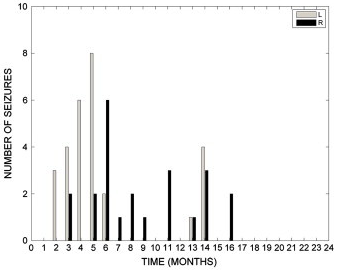To go along with the (new) Spring 2015 Emory Medicine magazine set of features on deep brain stimulation for depression, movement disorders and epilepsy, here is a fascinating 2013 case report from Emory neurosurgeon Robert Gross and colleagues. The first author is electrical engineer Otis Smart.
It’s an example of the kinds of insights that can be obtained from implantable electrical stimulation devices, which can record signals from seizures inside the brain over long periods of time (more than a year).
As the authors write, “the technology can record brain activity while the patient is in a more naturalistic environment than a hospital, becoming an invasive ambulatory EEG.â€
The patient described, a woman in her 20s, began having seizures at age 8. Initial investigations indicated that her seizures originated mostly from the temporal lobe on the left side of her brain. But during extended monitoring in the hospital, neurologists detected some seizures that started on the right side.
That variability meant that she wasn’t a candidate for surgery, but she was able to participate in a clinical trial for a deep brain stimulation device, which is supposed to detect the beginning of a seizure and then halt it with a burst of calming current. This device was later approved for treatment of drug-refractory epilepsy by the FDA.
Investigators found that the origin of the patient’s seizures switched back and forth; some months all the seizures came from the left side only, but in other months they came from the right side or both sides. Using the information obtained from the device’s recording function, doctors were able to tune the parameters for detecting seizures. As a result, the authors write: “seizure occurrences initially increased in three months postop but eventually decreased from monthly to none.â€


One Response to Recording seizures from within the brain